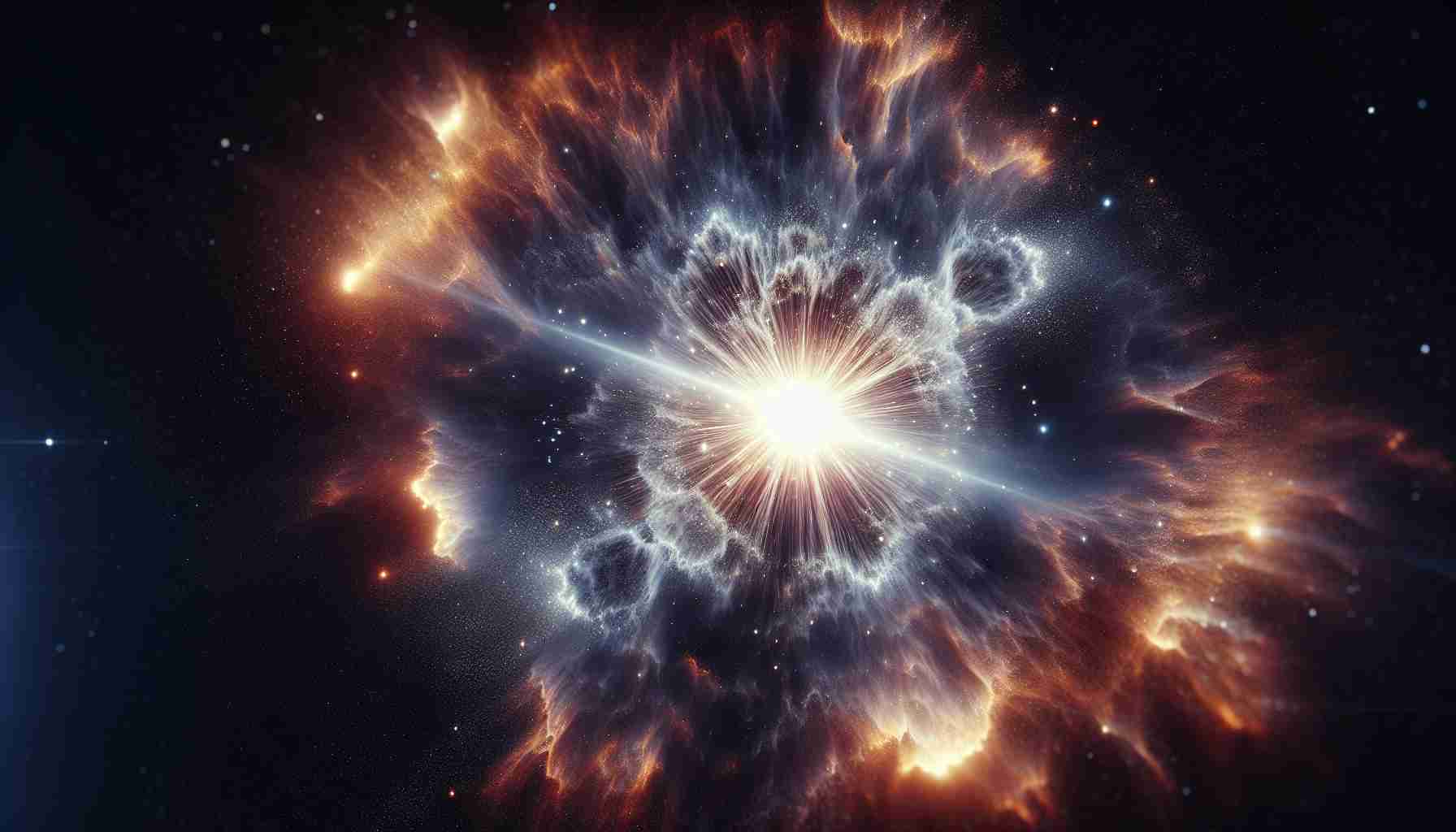The Most Metal-Poor Supernova Ever Observed
In a groundbreaking astronomical revelation, scientists have uncovered a rare supernova, designated 2023ufx, in a dwarf galaxy. This event marks the most metal-poor stellar explosion known, shedding light on conditions reminiscent of the universe’s infancy. Discovered by a global consortium of researchers, this supernova originates from a red supergiant star’s core collapse. Located at the fringes of its host galaxy, both the supernova and galaxy contain minimal elements heavier than hydrogen or helium.
Unraveling Cosmic Evolution
This extraordinary discovery offers valuable insight into the early cosmos, assisting astronomers in deciphering the process of galaxy and star formation. Metallicity, indicating the presence of elements heavier than hydrogen and helium, significantly affects a supernova’s characteristics, including its lifespan and brightness. Such studies extend our comprehension of cosmic history, illuminating the universe’s composition during its formative periods.
The Significance of Dwarf Galaxies
Dwarf galaxies are pivotal in understanding the universe’s early metal-poor conditions. Since present-day galaxies like the Milky Way have undergone extensive stellar evolution, analyzing these smaller cosmic structures allows scientists to infer processes that shaped the cosmos long ago. The latest study, published in a prominent astrophysics journal, underscores the role these galaxies play in our ongoing quest to map the universe’s history.
Technological Advances Pave the Way
Innovations such as the James Webb Space Telescope enable astronomers to observe these distant and faint phenomena more clearly, facilitating discoveries like 2023ufx. These observations are crucial for refining theoretical models and comprehending supernovae’s behavior in the universe’s nascent phases. This latest find emphasizes how rapidly spinning metal-poor stars played a vital role in early cosmic environments.
The Hidden Secrets of the Universe: A Metal-Poor Supernova Unraveled
Exploring Uncharted Cosmic Territory
The recent discovery of the supernova designated 2023ufx, hailed as the most metal-poor stellar explosion ever observed, has opened a new frontier in our understanding of the cosmos. This event originates from a red supergiant star in a dwarf galaxy, sparking excitement and debate within the astronomical community. However, aside from offering a glimpse into the early universe, what might this discovery imply for humanity’s future and technological advancement?
The Impact on Technology and Humanity
One intriguing aspect of this supernova observation is its potential influence on the development of technology. Metal-poor stars like the one involved in 2023ufx are thought to produce different types of elements during their lifecycle, potentially affecting cosmic chemical evolution in ways not fully understood. Could these findings inspire new technologies for detecting cosmic events or refining space observation methods?
Moreover, understanding these phenomena could play a pivotal role in humanity’s quest to develop advanced propulsion systems for space travel, as the composition of stars and supernovae can tell us much about the raw materials available in different regions of space.
Interesting Facts and Controversies
– Galactic Archaeology: The study of metal-poor supernovae is akin to unearthing ancient cosmic artifacts, offering a direct glimpse into the universe’s juvenile phases. This approach helps answer pressing questions about the transformation of primordial gas clouds into the complex galaxies we see today.
– Contentious Theories: The discovery raises questions about existing models of stellar evolution. Some theories suggest that metal-poor supernovae might evolve into black holes differently compared to their more metal-rich counterparts, challenging our current understanding of the cosmos’ lifecycle.
– Advantages: Observing such events assists in refining theoretical astrophysics models, deepening our grasp on everything from stellar death processes to the distribution of elements across the cosmos.
– Disadvantages: While promising, these findings are rooted in the behavior of extremely distant astronomical entities, making them hard to validate with current technology. There’s a risk of overextending implications without concrete verification.
Questions and Implications
One may ask: How do these metal-poor astronomical phenomena affect theories about the Big Bang and cosmic inflation? Current knowledge suggests that studying supernovae like 2023ufx could validate or refute existing theories about the universe’s earliest moments.
Another pressing question is how these findings might influence future space exploration and resource utilization strategies. Could the insights gathered from this supernova help pinpoint areas of interstellar space rich in essential elements for human technological progress?
Learn More About Astronomy and Space Research
For further reading and exploration into the fascinating world of astronomy, consider visiting NASA or the European Space Agency. These platforms provide comprehensive information and updates on the latest discoveries in the field.
The discovery of the most metal-poor supernova extends beyond merely enhancing our cosmic knowledge. It poses fundamental questions about humanity’s place in the universe and how these galactic events can potentially shape the future of technology and exploration. The door to the universe’s mysteries is wide open, urging us to delve deeper into the vast expanse of the unknown.
